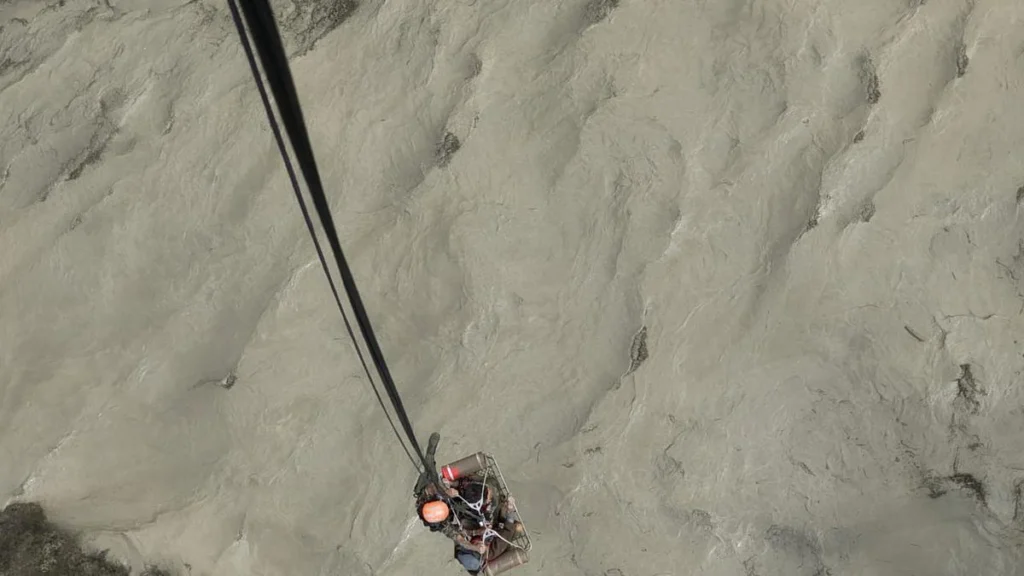Nepal floods: Rescuers search for 19 missing and recover nine bodies

Monsoon rains in Nepal have triggered devastating floods, leaving widespread damage and causing significant loss of life. Over 700 homes have been submerged, and rivers have overrun their banks. The floods have displaced thousands of people, and rescue teams continue to search for survivors. As of now, nine bodies have been recovered, while 19 people remain missing.
The Flooding Crisis
Heavy rains, typical of Nepal’s monsoon season, began in June and intensified through July. These rains led to severe flooding, especially in the low-lying regions of Nepal, where rivers and streams overflowed. The country’s infrastructure is ill-equipped to handle such heavy rainfall, which often results in landslides and flooding. Many communities have been cut off from rescue efforts, with roads, bridges, and communication lines washed away.
The floodwaters have caused severe disruption. Villages and towns in the eastern Terai plains, particularly in districts like Sunsari, Saptari, and Siraha, are some of the worst-hit areas. Homes have been destroyed, crops washed away, and essential services disrupted.
Rescue and Recovery Efforts
Rescue teams, including the Nepal Army, Nepal Police, and local disaster management groups, have mobilized to search for survivors and recover bodies. However, the situation is complicated by the difficult terrain and damaged infrastructure. Many roads have been washed out, hindering access to affected areas. Emergency teams are using helicopters, boats, and drones to navigate the worst-hit zones and reach those in need.
The recovery efforts have been slow, but officials remain hopeful. “We are doing everything we can to rescue people,” said a spokesperson from Nepal’s disaster management agency. Volunteers and local residents have played a vital role, helping to locate survivors and provide food and water to displaced families.
Despite the challenges, the efforts of the rescue teams and local communities have provided some relief to those in need. The government has set up temporary shelters and medical camps to support the displaced population.
The Impact on Communities and Infrastructure
The flood’s impact on local communities has been devastating. Thousands of people have lost their homes and possessions, and many are left without access to basic services like electricity and clean water. In addition, healthcare services are overwhelmed due to the injuries caused by the floods and landslides. The region’s medical facilities are struggling to treat patients, and the risk of disease outbreaks is rising.
Agricultural damage has been another major consequence. With many farms submerged under water, thousands of farmers face the loss of their livelihoods. The government has promised to provide aid, but recovery will take time. Farmers will need support to replant crops and restore damaged land.
The destruction of roads and bridges has isolated entire villages, making it difficult for authorities to assess the full extent of the damage. Rebuilding these infrastructures will be a long-term challenge for Nepal, as they struggle to deal with the immediate aftermath of the flood.
Climate Change and Its Role
Nepal’s monsoon season is increasingly unpredictable, with more intense rainfall and prolonged flooding. Climate change has intensified this pattern, with the melting of glaciers in the Himalayas adding more water to the rivers and streams. Experts warn that Nepal needs to prepare for even more extreme weather patterns as the climate continues to change.
The country’s vulnerability to natural disasters is compounded by poor infrastructure and limited disaster preparedness. The government has faced criticism for not adequately preparing for such extreme weather events, despite repeated warnings from experts. Moving forward, experts urge Nepal to invest in better flood management systems, early warning systems, and disaster-resistant infrastructure to mitigate the impact of future floods.
Humanitarian Assistance
The international community has stepped in to provide aid. Countries like India and China have pledged emergency assistance, including relief supplies and rescue teams. The United Nations and other humanitarian organizations are working alongside local authorities to ensure that displaced people receive food, clean water, and medical care.
While this aid has been crucial, the scale of the damage means that Nepal will need continued support for months to come. Relief efforts are focused on ensuring the basic survival needs of the affected population, but rebuilding infrastructure and restoring normalcy will take years. Local and international partners will need to collaborate to rebuild homes, restore essential services, and help communities recover.
Moving Forward: Preparedness for Future Floods
The latest floods in Nepal have highlighted the country’s vulnerability to climate-induced disasters. Moving forward, it’s essential for Nepal to invest in stronger flood control measures, such as better river management, flood barriers, and improved drainage systems. Additionally, building resilience at the community level, through disaster preparedness programs, will help reduce the impact of future floods.
Nepal must also focus on increasing public awareness about climate change and the steps communities can take to protect themselves. Local governments and international agencies can collaborate to create education campaigns about disaster risk reduction and improve the overall disaster response system.
Conclusion
The recent floods in Nepal have caused widespread devastation and affected thousands of lives. As rescue teams continue their efforts, the country faces a long road to recovery. The international community’s support will be essential to assist in rebuilding and providing relief to those affected by the floods. However, Nepal’s future security depends on improving its infrastructure, adapting to climate change, and preparing for future disasters. The resilience of the people of Nepal has been evident, but the government must now focus on long-term solutions to mitigate the impacts of extreme weather and ensure the safety of its citizens in the future.






